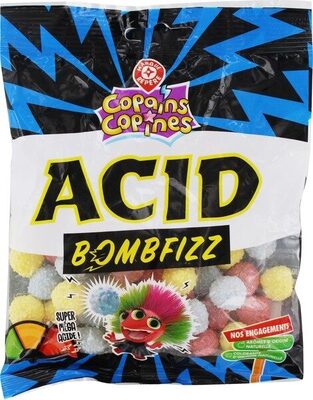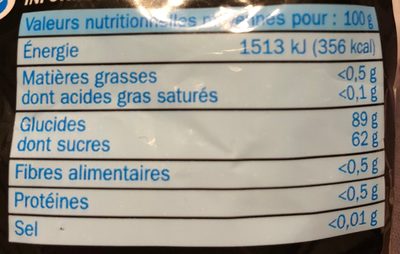Météorites bombfizz - Marque Repère - 150 g
This product page is not complete. You can help to complete it by editing it and adding more data from the photos we have, or by taking more photos using the app for Android or iPhone/iPad. Thank you!
×
Some of the data for this product has been provided directly by the manufacturer Scamark.
Barcode: 3564700999349 (EAN / EAN-13)
Quantity: 150 g
Brands: Marque Repère, Copains Copines
Stores: Leclerc
Countries where sold: France
Matching with your preferences
Environment
Packaging
Transportation
Other information
Preparation: Précautions d'emploi : Ce bonbon étant très acide, il est déconseillé de le donner à de jeunes enfants.
Report a problem
Data sources
Product added on by kiliweb
Last edit of product page on by org-scamark.
Product page also edited by openfoodfacts-contributors, scamark, yuka.WnFFZklLOVppYVlubk1NWG9RclpvY0ozbkxPRVlXUzROOG9ESVE9PQ.








